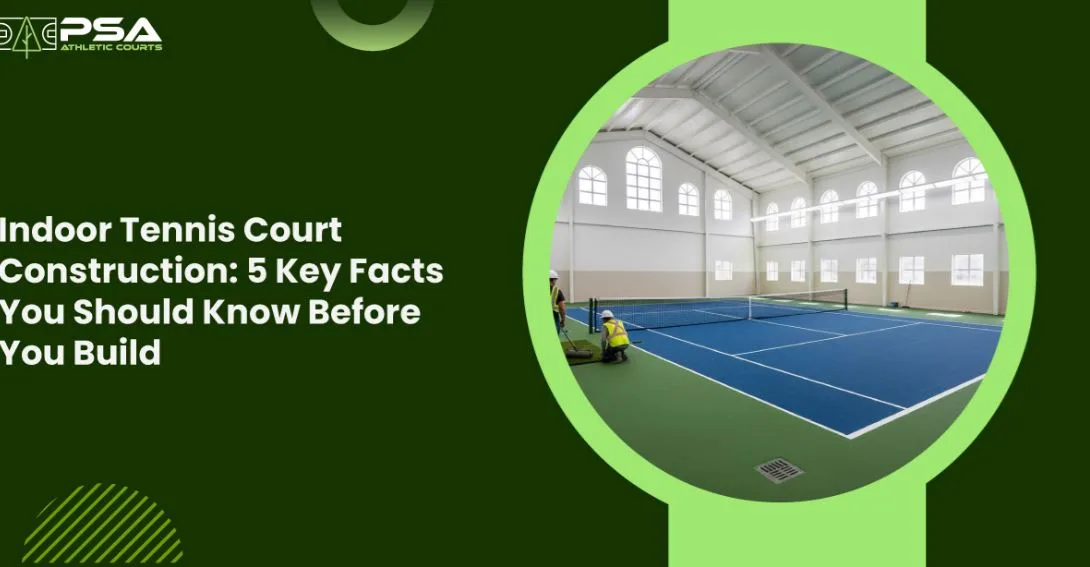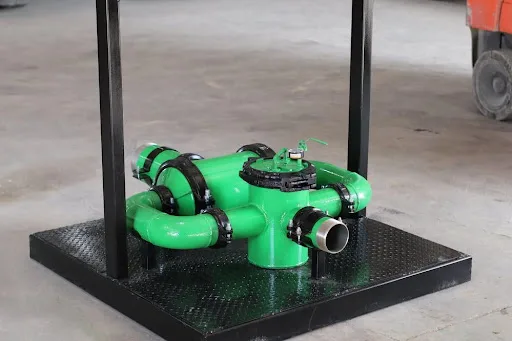Indoor Tennis Court Construction: 5 Key Facts You Should Know Before You Build
Introduction
Building an indoor tennis court isn’t just about creating a space to play year-round, it’s an investment in performance, comfort, and durability. Whether you’re planning a private home court, a school facility, or a commercial tennis complex, understanding the essentials of indoor tennis court construction can help you avoid costly mistakes down the road.
From choosing the right materials to estimating the indoor tennis court construction cost, every detail matters. In this guide, we’ll explore five key factors that shape both the quality and cost of your project, so you can plan confidently and make informed decisions with expert insight from PineState Courts.
- Space and Dimensions Define the Foundation
Before construction begins, proper space planning is crucial.
A standard tennis court measures 78 feet long and 36 feet wide for doubles play (27 feet for singles). However, for an indoor facility, you’ll need extra clearance, typically a minimum of 60 feet wide and 120 feet long, with a ceiling height of at least 30 feet.
This additional space ensures safe play, proper ball flight, and comfortable movement around the court.
If you’re working with a confined area or planning a multi-court setup, PineState Courts helps design optimal layouts that maintain regulation standards while maximizing your available space.
- Surface Materials Impact Performance and Maintenance
Your court’s surface determines how it plays, feels, and performs over time. Choosing the right material is one of the most important decisions in indoor tennis court construction.
Common options include:
- Acrylic hard courts: Long-lasting, consistent bounce, and low maintenance.
- Cushioned surfaces: Designed to reduce joint impact, ideal for training centers.
- Carpet or synthetic turf: Often used in multipurpose indoor facilities.
At PineState Courts, we guide clients through surface selection based on play style, maintenance expectations, and budget, ensuring the perfect balance between performance and durability.
- Understanding Indoor Tennis Court Construction Cost
Costs vary depending on materials, design complexity, and region. Here’s a breakdown of the major elements that influence indoor tennis court construction cost per court:
| Component | Estimated Cost (USD) |
| Base Foundation & Surfacing | $50,000 – $100,000 |
| Steel or Fabric Building Structure | $200,000 – $400,000 |
| Lighting, HVAC & Ventilation | $50,000 – $100,000 |
| Accessories & Equipment | $5,000 – $15,000 |
In total, the average indoor tennis court construction cost typically ranges between $250,000 and $500,000 per court in the U.S.
For colder climates like Connecticut, where weather control and insulation are essential, PineState Courts specializes in designing energy-efficient indoor facilities that minimize operational costs and maximize year-round usability.
- Lighting, Climate Control, and Drainage Design Are Critical
Unlike outdoor setups, indoor tennis courts depend heavily on smart engineering for lighting, ventilation, and temperature control.
Professional builders like PineState Courts install LED sports lighting systems that replicate daylight conditions and reduce glare. Proper HVAC and humidity control help maintain surface quality and prevent condensation especially in humid regions.
For facilities in Connecticut, well-planned insulation and dehumidification systems are key to extending your court’s lifespan and ensuring consistent playability.
- Choose Experienced Indoor Court Builders
Not all construction teams have the expertise to deliver high-performance indoor courts.
When selecting a partner, look for:
- Proven experience in indoor court construction
- Knowledge of regional building codes
- In-house design and surfacing capabilities
- Post-construction maintenance support
With decades of combined experience, PineState Courts designs, builds, and maintains premium tennis facilities across New England, from Connecticut and Maine to Massachusetts and beyond. Each project reflects precision engineering, superior craftsmanship, and long-term value.
Conclusion
A great indoor tennis court starts long before the first ball is served. From understanding court dimensions and material choices to managing construction costs and climate systems, every detail influences your court’s longevity and play quality.
Whether you’re planning a personal indoor court or a professional training facility, PineState Courts is your trusted partner for complete indoor tennis court design, construction, and maintenance.
🎾 Ready to begin your project?
Contact Pine State Courts today to discuss your indoor tennis court vision and get a personalized cost estimate.
Frequently Asked Questions (FAQs)
- How much does it cost to build a tennis court?
The cost to build a tennis court depends on location, surface type, and whether it’s indoor or outdoor. On average, a standard outdoor tennis court costs between $60,000 and $120,000, while an indoor tennis court can range from $250,000 to $500,000 per court due to additional structural and HVAC requirements.
- What is the average cost to build a tennis court per square foot?
A typical tennis court (including fencing and surfacing) starting costs around $60 per square foot. Indoor courts tend to be higher due to the cost of enclosures, lighting, and climate control systems.
- Does location affect the tennis court construction cost?
Yes. Factors like local building codes, soil conditions, and climate play a major role. For example, building in Connecticut or other cold-weather states may increase costs slightly because of insulation, heating, and weatherproofing requirements.
- How long does it take to build a tennis court?
The timeline varies depending on site prep and structure type. An outdoor court typically takes 6–8 weeks, while an indoor court may take 3–6 months from design to completion.
- Can PineState Courts help with both indoor and outdoor court projects?
Absolutely. PineState Courts specializes in the design, construction, and resurfacing of both indoor and outdoor tennis courts across New England, offering end-to-end solutions that ensure lasting performance and professional-grade quality.





